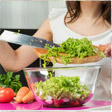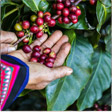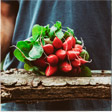
Let's stay in touch
Visit Our Office
Contact Us
Food Packaging 101: Compostable, Biodegradable or Recyclable?
-
Packaging R Us > News > Uncategorized > Food Packaging 101: Compostable, Biodegradable or Recyclable?
You’ve just finished your delicious bowl of takeaway pasta, in the corner of your eye you see three different coloured bins – red, yellow and green. You flip the bowl and it says it’s compostable, the lid says it’s recyclable and the cutlery is white plastic with no signs. It’s a little confusing. Now what?
In the last few years, we’ve seen businesses promise and act on changes towards sustainability. More and more cafes, restaurants, fast-food chains and canteens are choosing to opt for eco-friendly packaging. But without a national standard for packaging, it can be confusing for customers to figure out what goes where and what will happen after.
Which’s why we wanted to clear things up. Here are the ins and outs of biodegradable, degradable, compostable and recyclable food packaging and what we recommend you stock up on.
Highlights:
- Compostable and Biodegradable are often used interchangeably but they mean two different things.
- Biodegradable products can take up to 1000 years to decompose
- Compostable products are best for food packaging because they can be regenerated as compost to grow more food.
- Packaging R Us collaborated with a recycling & composting facility to create a program for retail outlets, cafes, schools, event hosts and city councils to turn packaging into premium quality composts fertilisers.
- Recyclable packaging with considerable food waste ends in landfill.
What does biodegradable mean?

Compostable and biodegradable are often used interchangeably, but they mean two different things. Biodegradable products can be broken down without oxygen and turned into carbon dioxide, water and biomass within a reasonable amount of time. It’s important to note though that all products, whether paper or plastic, will eventually break down. It’s just about when.
Because there is no set time that products need to break down before it’s considered biodegradable, many companies who claim they use biodegradable products can actually just be doing green marketing. Though it is assumed that biodegradable products take less time to break down than the maximum of 1000 years it can take to break down some plastics naturally, whether or not that’s good enough for you or your business is up to you to decide.
What does compostable mean?

Compostable products can be broken down into carbon dioxide, water, inorganic compounds and biomass in small pieces in about 90 days (a huge leap from the 1000-year limit). Millions of tiny microbes consume the waste and transform the inorganic material into compost, which can be used as fertiliser or to generate energy. Another plus is, because it’s organic, it doesn’t leave a toxic residue. These products go in the green bin.
We’ve collaborated with a recycling and composting company to implement and deliver a program for retail outlets, cafe, businesses, schools, event hosts and city councils to turn to compostable food packaging, which can then be processed into composts through home compost or commercial compost facility. Check out our Facebook post for more information, or call us at (08) 6254 2623 to book a commitment-free appointment.
What does recyclable mean?

Most of us understand the process of recycling. We grew up with the saying: reduce, reuse, recycle; and we know to recycle glass, paper, metal, plastic, textiles and electronics. However, what most people still don’t know is that food packaging with considerable food waste, in fact, can not be recycled and will still end in a landfill. Some of the non-recyclable items that Australians use and unknowingly place in these yellow bins are coffee cups and pizza boxes. Which is why when it comes to food packaging, we recommend compostable rather than recycling. It simplifies the disposal process for consumers – turning our rubbish into its natural organic form.
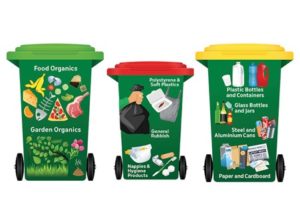
‘What goes in what bin?’ by City of Melville
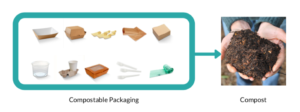
Make the right decision to switch today. Together, let’s create a sustainable environment for the generations to come.
Packaging R Us
sales@packagingrus.com.au
(08) 6254 2623
53 Mordaunt Circuit, Canning Vale 6150, WA



